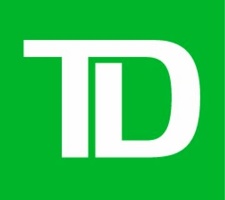@TDAM_Canada
Investor Knowledge + 5 Minutes = New Thinking
"It's all Greek to me!" is an old expression that many say when there is something difficult to understand. It is commonly used around situations containing excessive use of jargon, mathematics, science, and for the purpose of this blog – investment account statements!
Most investment account statements have their fair share of jargon and math (some may argue science as well). While most of the information may be logical and easy to understand, there are a few items that can create confusion and something even more problematic: misinterpretation, with the most commonly misinterpreted term being "book value".
What is book value?
Book value, which is also referred to as adjusted cost base (ACB), is the amount that is calculated by adding the total amount of contributions made by an investor into a particular investment (stock, mutual fund, Exchange-Traded Fund etc.). These total contributions include the initial amount invested, any reinvested fund distributions, minus any withdrawals. Sounds straightforward. So, what's the big misinterpretation that many investors have?
The problem
Time and time again we hear from advisors that clients are misinterpreting their statements, particularly when trying to determine how much money was made or lost in their account over a certain period of time. The problem is when investors look at their book value, they often assume it's what they initially invested, and then subtract the current market value to figure out their gain or loss.
Unfortunately, comparing these values often leads to incorrect conclusions regarding actual performance of the investment, and in some cases believing there was a loss when in fact the return is positive. The key factor that needs clarity is that when looking at investment statements, the book value is not necessarily their original investment but can also include reinvested distributions.
Don’t let the distributions distract you
Investments like mutual funds often earn interest, dividends and capital gains (losses) from their underlying investments, and the fund will pay out these earnings/capital gains to its unitholders via distributions. With securities, like stocks, a dividend by the issuer of the security to investors are often reinvested to purchase more stocks, which can also increase the book value in a similar manner with mutual fund distributions.
The key takeaway is that the book value that investors see on their statements is greater than their original investment amount if they received distributions that were subsequently re-invested. When an investor received and reinvests these distributions, they are added to the initial investment amount. This combined amount is the new adjusted cost base.
The great way to understanding is through an example!
For the visual learners out there, let's look at a simple example:
The details:
January 1, 2022, initial investment: $100,000 Received and reinvested dividends through 2022 totaling $5,000 Book value at Dec. 31, 2022 ($100,000 +5,000) = $105,000 Current market value Dec. 31, 2022= $115,000
The misinterpreted, and very common way to calculate the return:
Market value - Book value / Book value $115,000 - $105,000 / $105,000 = 9.52%
The correct way to calculate the return:
(Market value – amount invested) / amount invested $115,000 - $100,000 / $100,000 = 15%
The rule of thumb
An easy rule of thumb to remember when looking at investment statements and trying to gauge performance is to always use your market value and initial amount invested from your statement. For more information, please check out the Distribution Guide or speak with an investment professional.
The information contained herein has been provided by TD Asset Management Inc. and is for information purposes only. The information has been drawn from sources believed to be reliable. The information does not provide financial, legal, tax or investment advice. Particular investment, tax, or trading strategies should be evaluated relative to each individual's objectives and risk tolerance.
Certain statements in this document may contain forward-looking statements (“FLS”) that are predictive in nature and may include words such as “expects”, “anticipates”, “intends”, “believes”, “estimates” and similar forward-looking expressions or negative versions thereof. FLS are based on current expectations and projections about future general economic, political and relevant market factors, such as interest and foreign exchange rates, equity and capital markets, the general business environment, assuming no changes to tax or other laws or government regulation or catastrophic events. Expectations and projections about future events are inherently subject to risks and uncertainties, which may be unforeseeable. Such expectations and projections may be incorrect in the future. FLS are not guarantees of future performance. Actual events could differ materially from those expressed or implied in any FLS. A number of important factors including those factors set out above can contribute to these digressions. You should avoid placing any reliance on FLS.
TD Asset Management Inc. is a wholly-owned subsidiary of The Toronto-Dominion Bank..
®The TD logo and other TD trademarks are the property of The Toronto-Dominion Bank or its subsidiaries.
 Canada
Canada

